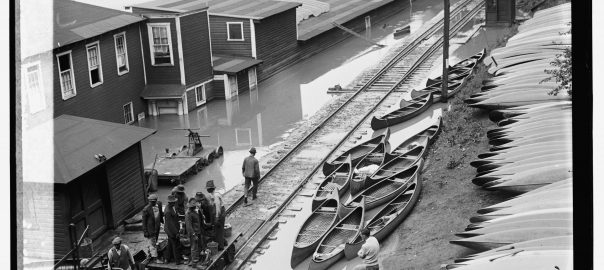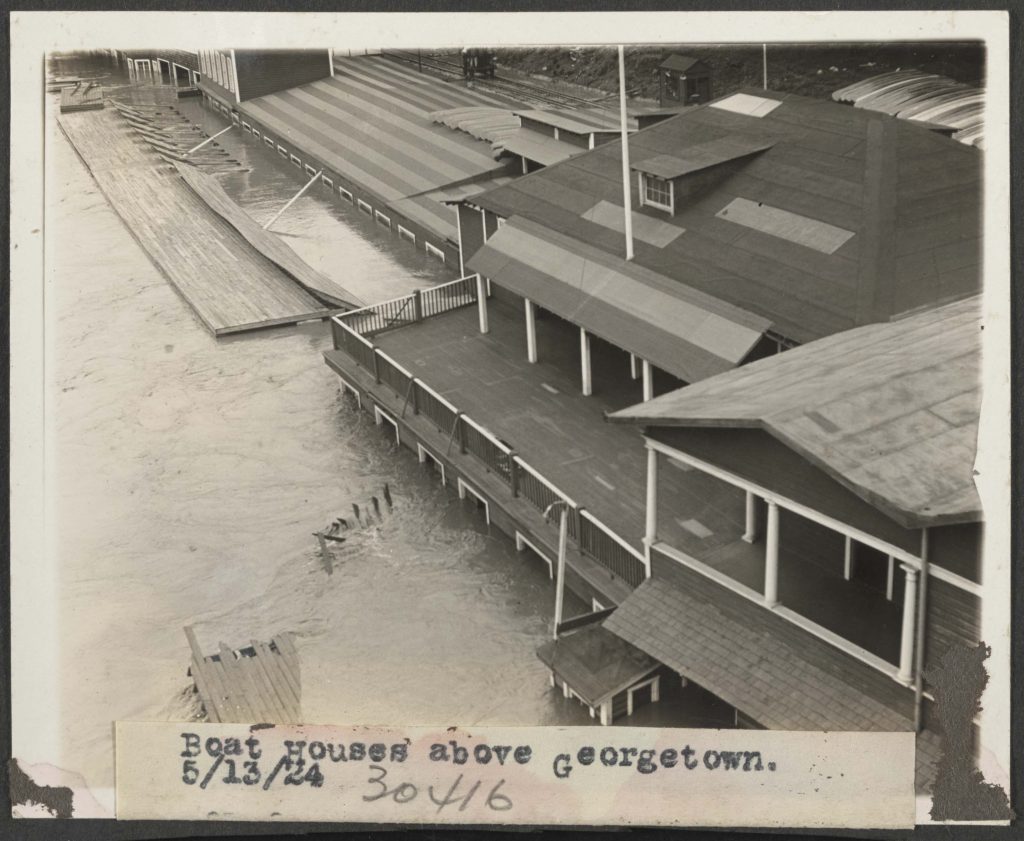
Stumbled across this photo on eBay earlier this week (above) and it reminded me that I’ve been sitting on a handful of really fascinating images I found on the Library of Congress site capturing the flood of May 13, 1924. Like so many things on eBay it’s far from rare or original, but rather just an overpriced print of a Library of Congress file that you can snag at high-res via the website. Pro tip – before you purchase that print, search the LoC thoroughly to possibly save yourself some dough.
The subject matter is interesting because it shows not only the scale house in Georgetown, but also a hand cart full of railroad employees, no doubt headed out to inspect the line as the waters recede. Note the jacks and other tools they have on the cart. They would have been met with some troubling finds. There are many photos on the LoC – here is a selection of relevant ones I found interesting. In the following image I believe it is the same crew; note the lighter color pants on the gentleman standing at the back left of the hand cart, visible in both photos. Note the detail of the scale and scale house as well as all the equipment around the section shed.

Flood. , 1924. Photograph. https://www.loc.gov/item/2016837495/.
A neat thing I noticed, if you look really closely in the top right, you’ll see a B&O steam loco doing some switching, with someone sitting on the front pilot. It is likely moving the freight cars you’ll see in some of the next photos. Pretty cool!
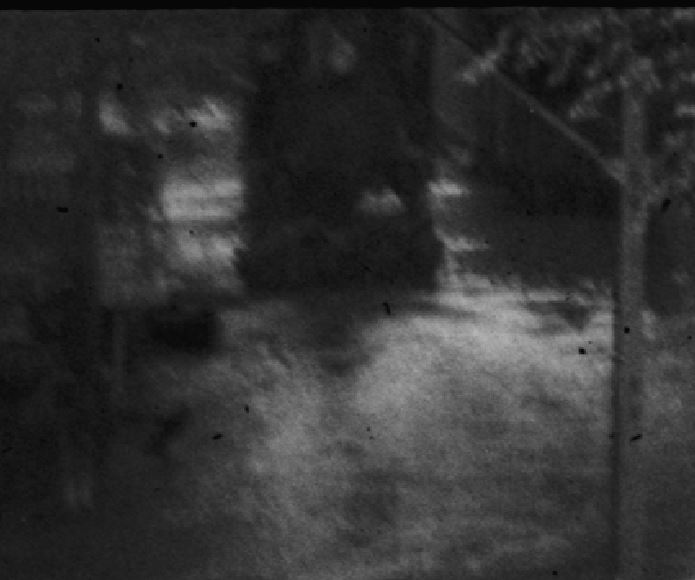
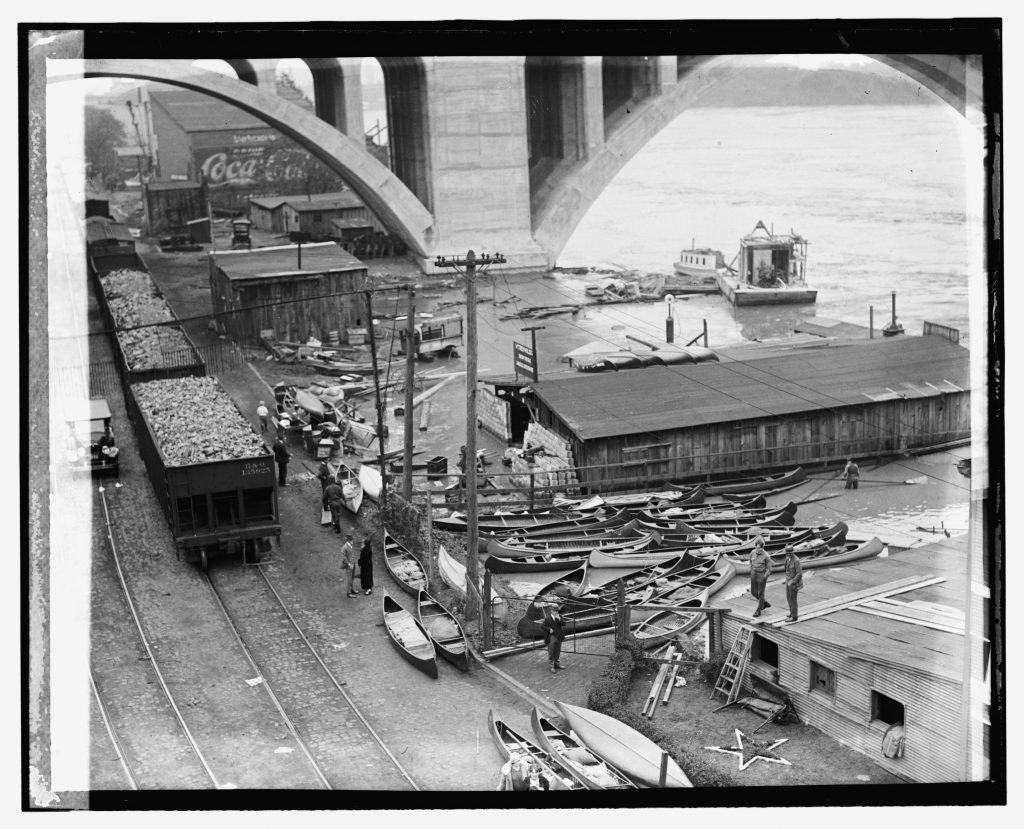
Flood. , 1924. Photograph. https://www.loc.gov/item/2016837490/.
Eric Hansmann has a wonderful set of resources for the 1926 B&O freight car fleet: https://designbuildop.hansmanns.org/bo-freight-car-fleet-of-1926/
B&O Hopper 135925 is a class W-1 (135000-135999) 2511 cu/ft capacity, blt 1910. A bit further down the line, just past the boathouses and at the west end of the long passing siding, we come to another string of hoppers and some folks who have rescued their belongings from the floodwaters. The shoreline of the Potomac was absolutely littered with small shacks and cabins that folks had to escape the downtown hustle-and-bustle. Stretching all the way up to Chain Bridge, these shacks were a fascinating part of the history of Georgetown.
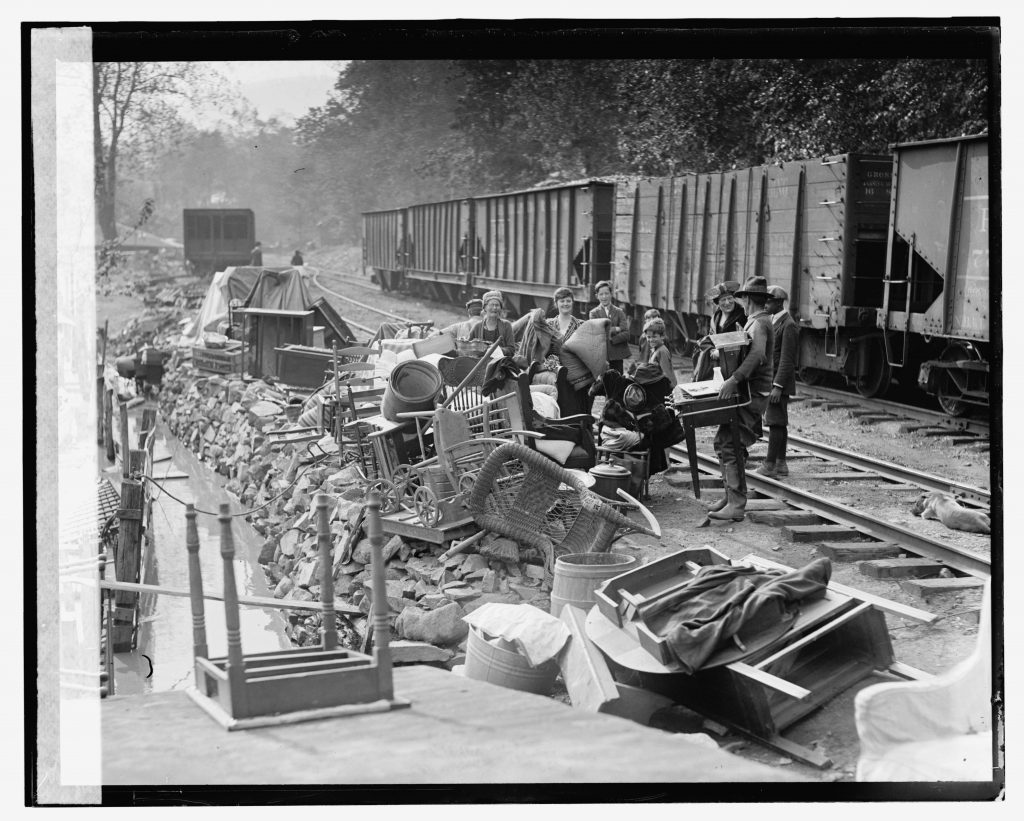
Flood. , 1924. Photograph. https://www.loc.gov/item/2016837488/.
Attempting to ID the freight cars, it looks like from the right to left we have:
- 1: Philadelphia & Reading 77xxx – 34′ 55-ton arch bar trucks, 1880 cu.ft. capacity hopper, class HTh (nos 74500 – 78999), built 1916-17 by Standard Steel Car. Approx. 4495 on the roster in 1924. Detailed roster info from RT&HS. Builders photo from Kinkaid collection here and here.
- 2: Philadelphia & Reading 30′ 40-ton, 1485 cu.ft. capacity hopper, class HTk (nos 61000 – 61863), being rebuilt in 1921 from HTb (blt 1902) series 60000-60999 by AC&F. Note unusual Fox Pressed Steel Trucks. In 1924 there were 854 on the roster. Detailed roster info from RT&HS Pic from Kinkaid collection.
- 3 & 4: Based on the distinctive side sills, these appear to also be Philadelphia & Reading class HTf hoppers, but slightly modified from as-built images I found. The HTf (86000-89999) was a 34′, 55 ton, 1843 cu.ft. capacity car with arch bar trucks. They were built in four batches from 1910-11 and again in 1913. In 1924 there were 3970 on the rails. Likely after shopping they received grab irons on the sides as well as some sort of bracket/brace above each bolster on the side sill. Early photos do not show these brackets. Here are some builders photos from the Kincaid collection one two three. Here is a photo of one with the brackets from Shamokin Div website. Detailed roster info from RT&HS.
- 5 & 6 These cars are just too far off for me to get a read on what they are.
I believe the cars are actually being moved. Why? Because in this next photo, which is of the same subjects, there are different cars in view:
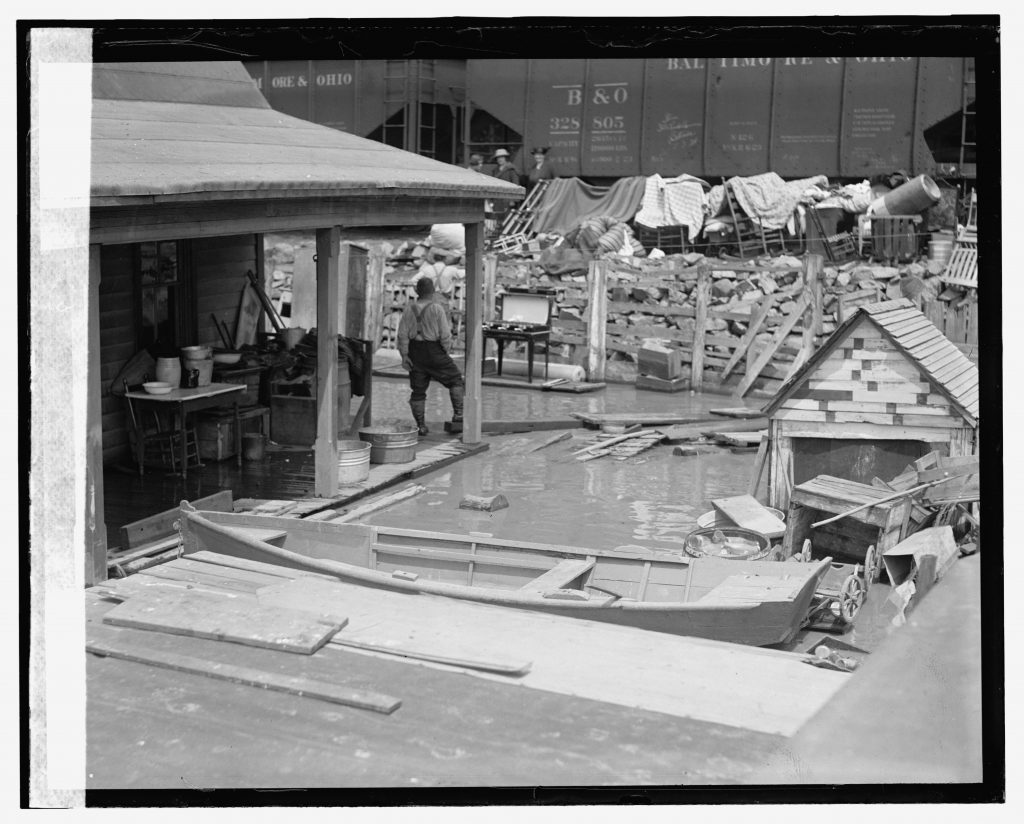
Flood. , 1924. Photograph. https://www.loc.gov/item/2016837496/.
Two B&O Hoppers in view:
- 1: BO 328805, class N-12g (327000-331999) (4998 cars) 1800 cu.ft capacity, blt 1923.
- 2: BO ? – appears to possibly be another N-12 class.
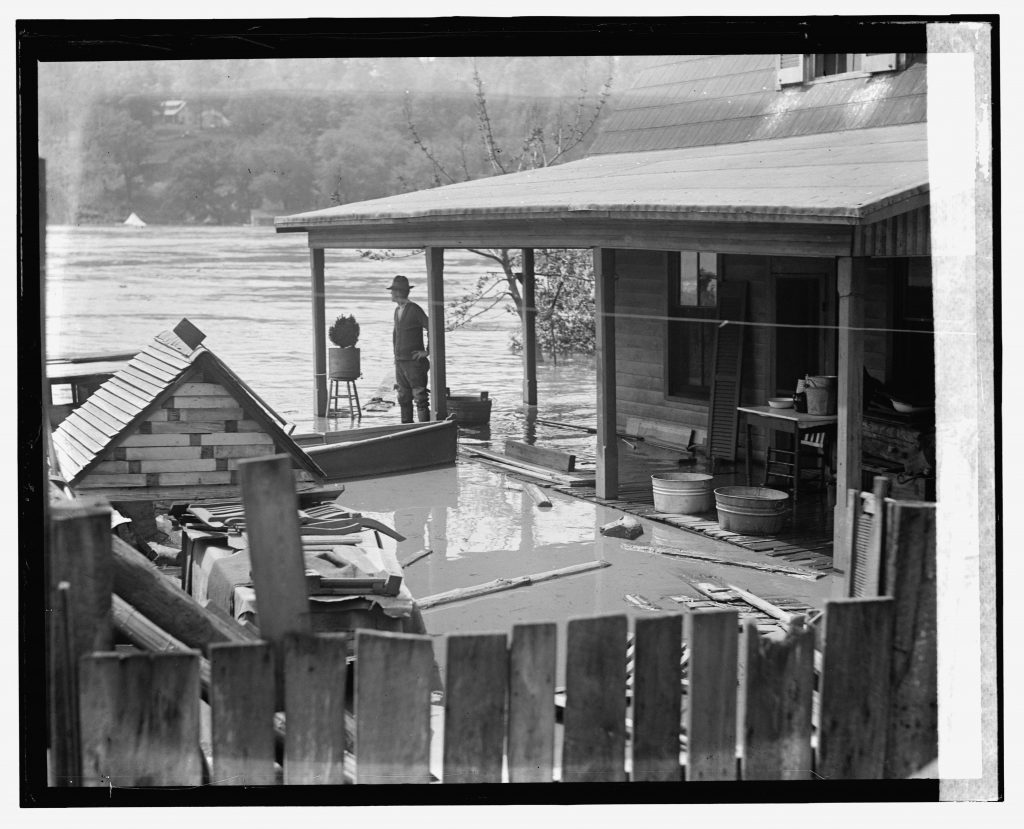
Flood. , 1924. Photograph. https://www.loc.gov/item/2016837486/.
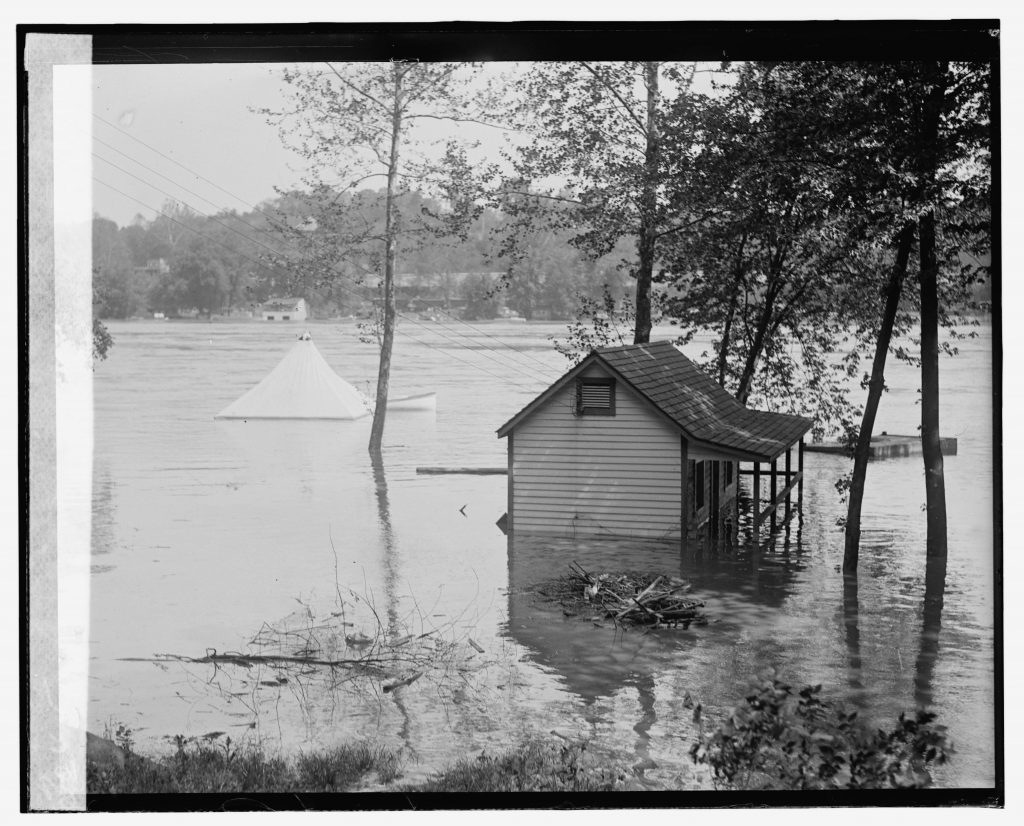
Flood. , 1924. Photograph. https://www.loc.gov/item/2016837494/.
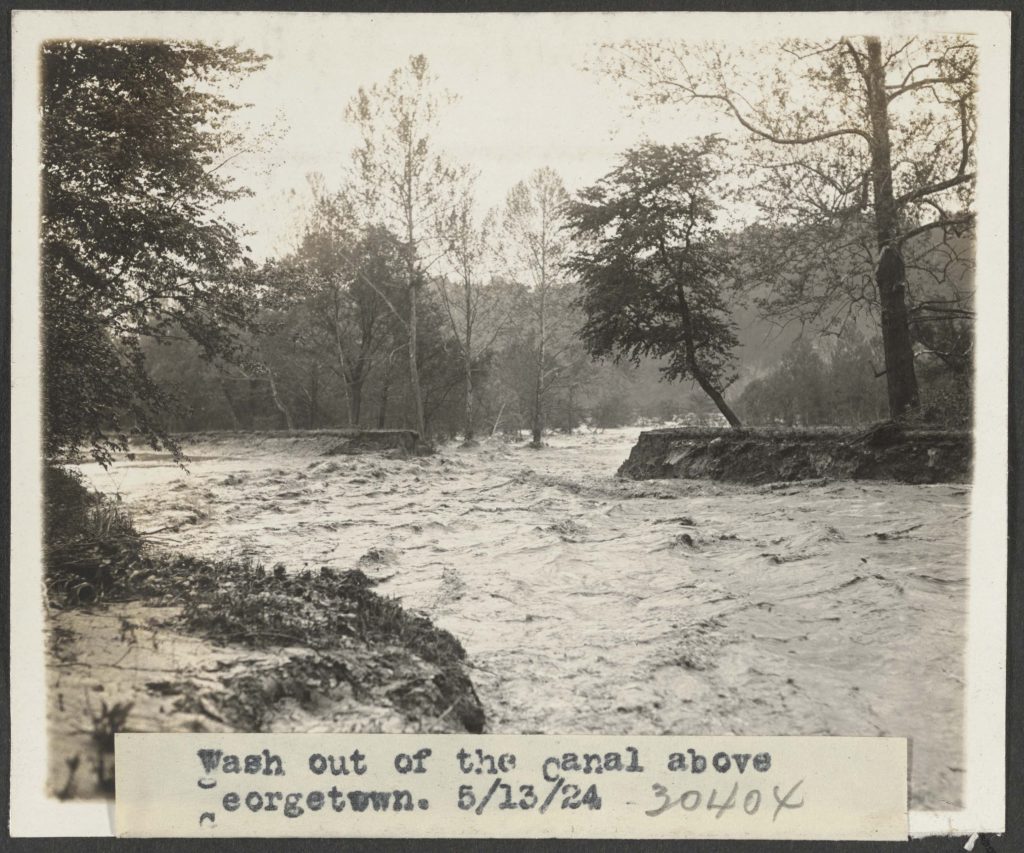
The B&O RR had gained a controlling stake in the C&O Canal, in 1890 it was put into receivership. The B&O wanted to prevent other railroads from purchasing the right of way. A history of damaging floods and maintenance headaches meant that the canal was holding on for dear life but thanks to many unusual years of relatively minor flood issues, the canal soldiered on. The B&O had to maintain it just enough to keep it in service, which they did. That is until 1924.
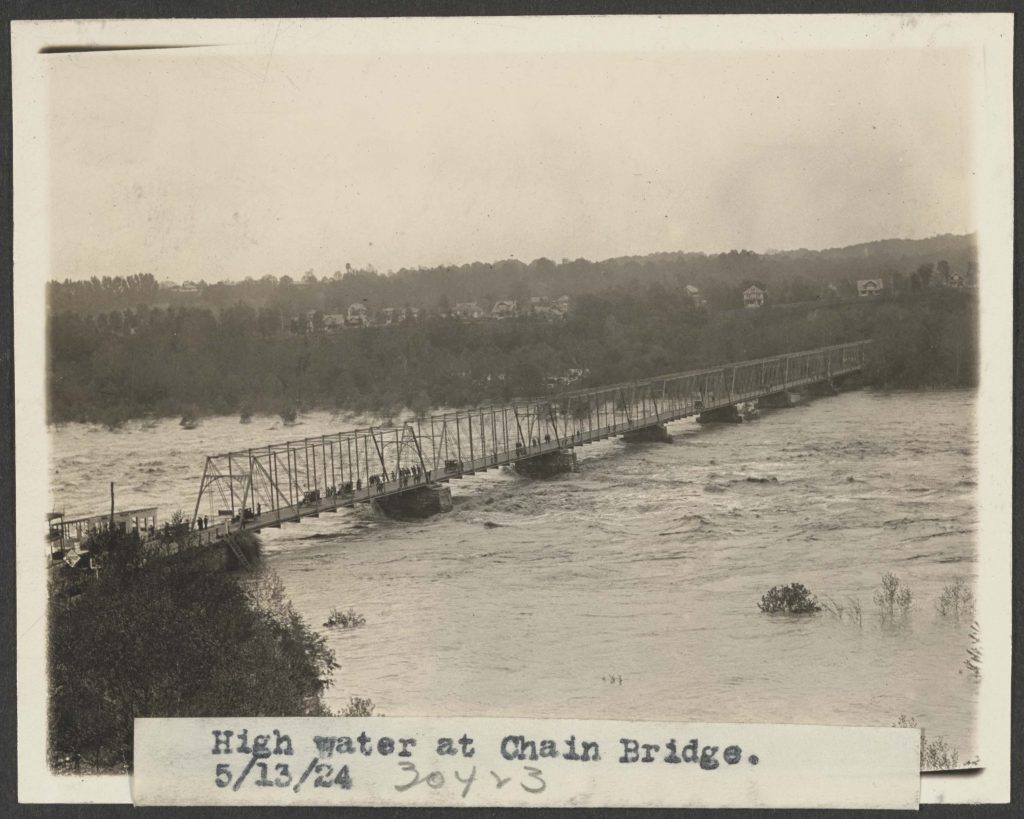
The first flood of 1924 came in March but it was largely focused on Northern sections of the Canal. Repairs were not too overwhelming and were undertaken by contractors for the B&O. The flood that occurred two months later in May was another story, and proved to be too much for the Canal to survive in the long run. By August of that year, the Canal had largely been shut down save for some sections kept open for various contract obligations.
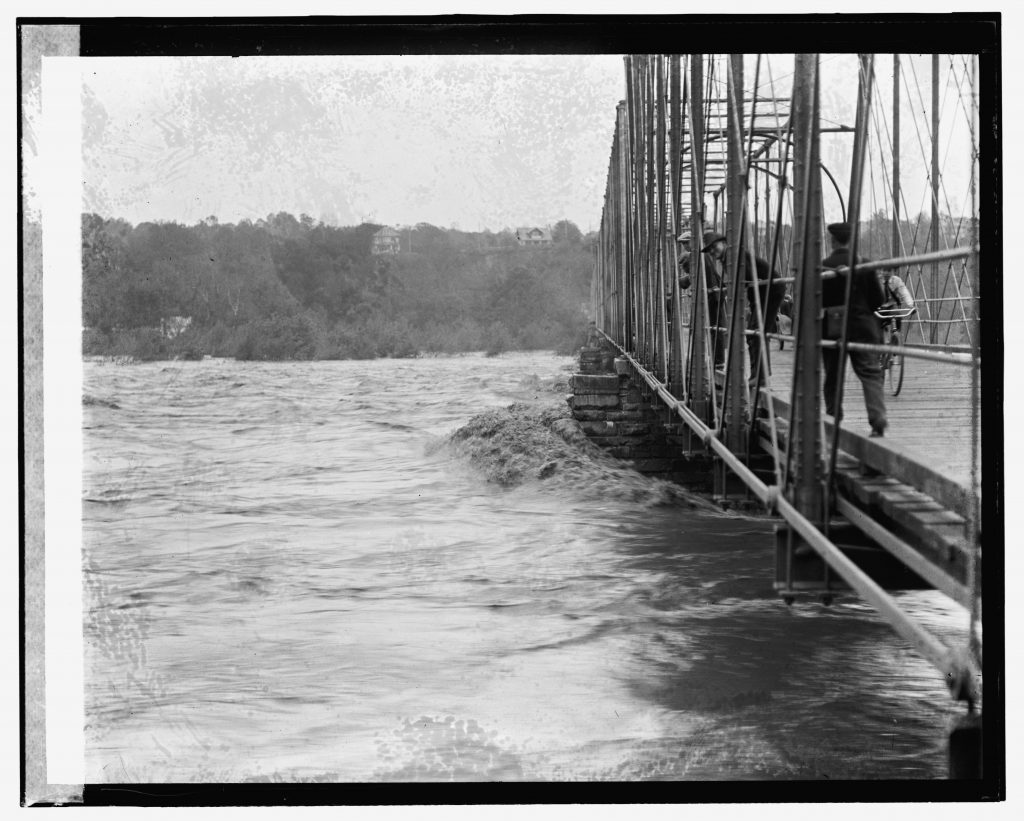
Flood. , 1924. Photograph. https://www.loc.gov/item/2016837498/.
There were many historic floods on the Potomac, and many which affected operations on the Georgetown Branch. In fact, in many instances, the flooding dictated the survival of the line – remember famously the engine that was stranded in Georgetown after the devastating flooding from Hurricane Agnes, which toppled the Rock Creek trestle and damaged many waterfront industries. The 1924 flood, in particular, was interesting because afterwards the B&O was finally able to neglect the waterway, performing only minor maintenance on it until selling to the National Park Service in the late 1930s.
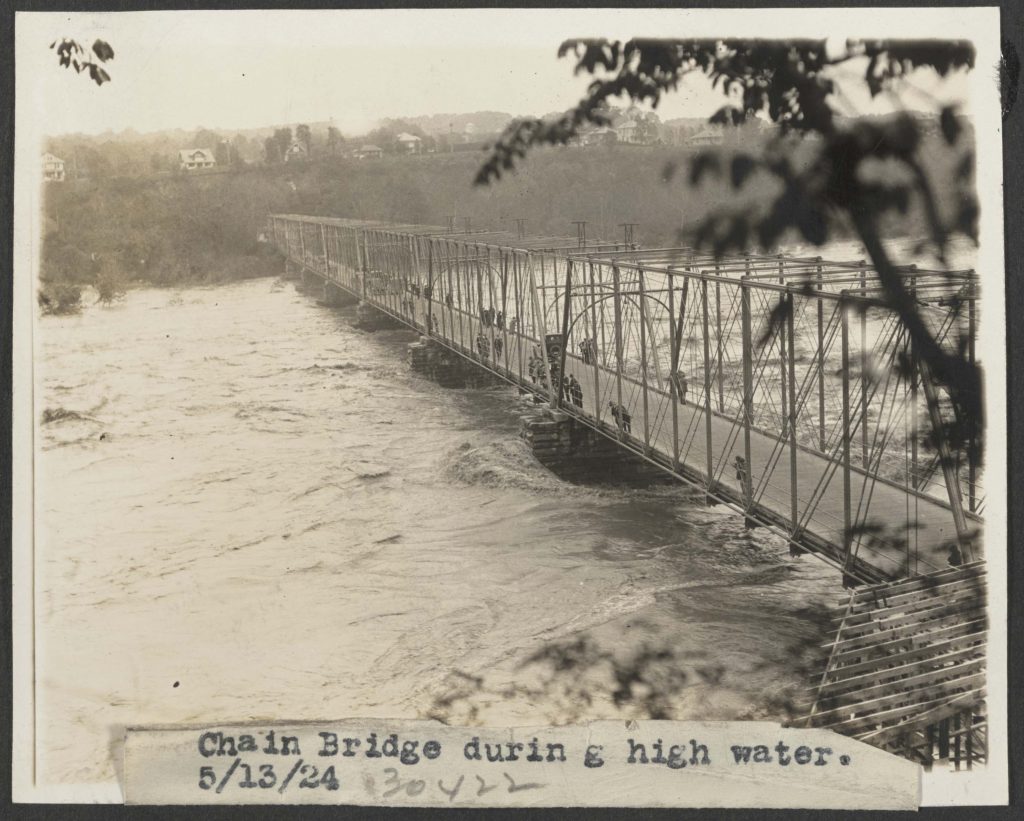
More LoC photos here: https://www.loc.gov/search/?in=&q=11200+flood&new=true
A fantastic history of the C&O Canal and flooding, published by the National Park Servicehttps://www.nps.gov/parkhistory/online_books/choh/trouble.pdf
